Learn how to knit stocking stitch
You are probably more aware of stocking stitch in your knitting than you might realise. Take a look at what you’re wearing, and look closely – your socks, tights, and jersey tops are all likely knitted in stocking stitch. By a machine? Yes, of course, those v-shaped stitches are tiny. But it’s exactly the same when you get going with your knitting.
Stocking stitch is a staple in the knitting world, and for good reason. It's easy to learn, and once you've got the hang of it, you can create a wide variety of beautiful projects.
The stitch is perfect for creating smooth, even fabrics that are ideal for garments, blankets, and even accessories like scarves and hats.
Stocking stitch (abbreviated to st st or stst in patterns) creates a roomy, stretchy fabric. Using a mix of knit and purl stitches, which you'll master when you first learn how to knit, it is smooth on the right side of the fabric, with horizontal rows of ridges on the purl side.
One of the best things about stocking stitch is its versatility. Depending on the yarn and needle size you use, the fabric can be dense and warm or light and airy. Y
ou can also experiment with different colour combinations and stitch patterns to create unique and eye-catching designs. And because stocking stitch is so easy to knit, it's a great stitch for beginners who are just starting to explore the world of knitting.
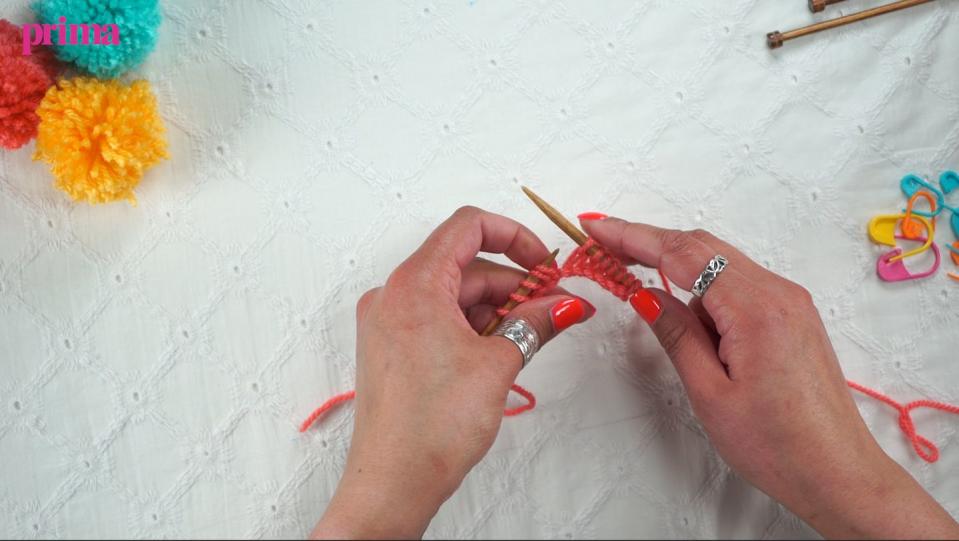
Unlike moss stitch or garter stitch, which are both textured stitch patterns, stocking stitch (or ‘stockinette stitch’ if you’re in the US) has a smooth surface on the knit side – perfect for embroidery or showcasing some colourwork. That being said, some knitting patterns will instead direct you to work ‘reverse stocking stitch’, which is exactly the same, but with the purl side of the fabric (the ridged, bumpy side) facing outwards, for a slightly different look.
For our full glossary of knitting abbreviations, click here.
What you need to knit stocking stitch
Just needles and yarn! Any yarn is suitable just make sure to match it with the recommended needle size. (You can find the information about which needle size to use on the label of your ball of yarn)
If you’re knitting toys, you’ll find that knitting patterns will direct you to use far smaller needles than recommended. This is to help keep the stuffing in and stop your more intricate knitted shapes from warping and stretching.
How to knit stocking stitch with step-by-step pictures
Cast on your chosen number of stitches. Stocking stitch works with absolutely any number of stitches. To get a clue for how many you might need to knit a piece of stocking stitch in a particular size, see the end of this article.
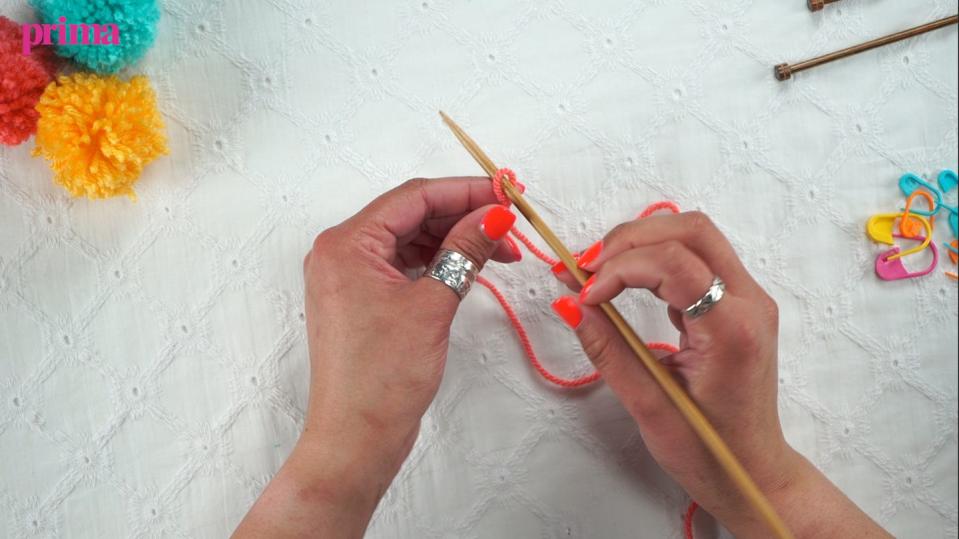
Stocking stitch is made up of two rows:
Row 1: Knit to the end.
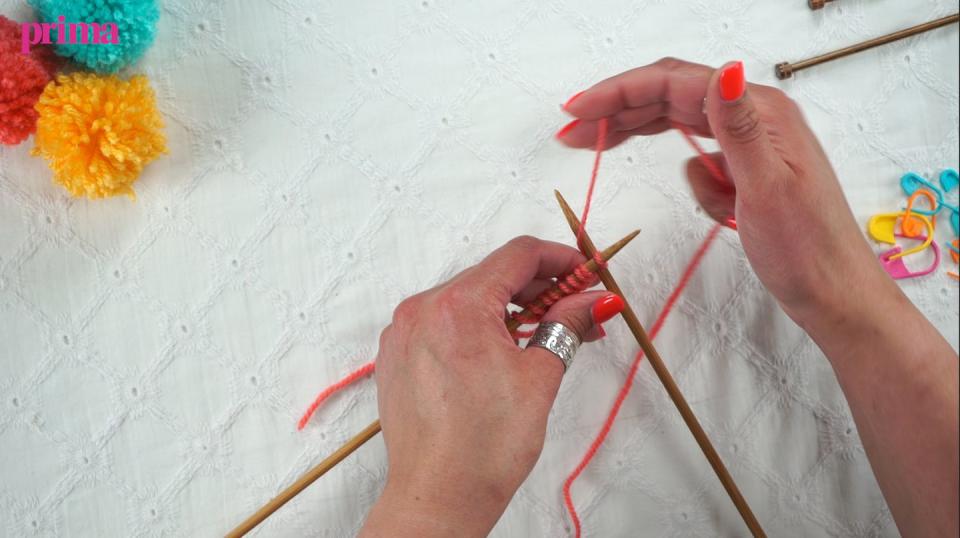
Row 2: Purl to the end.
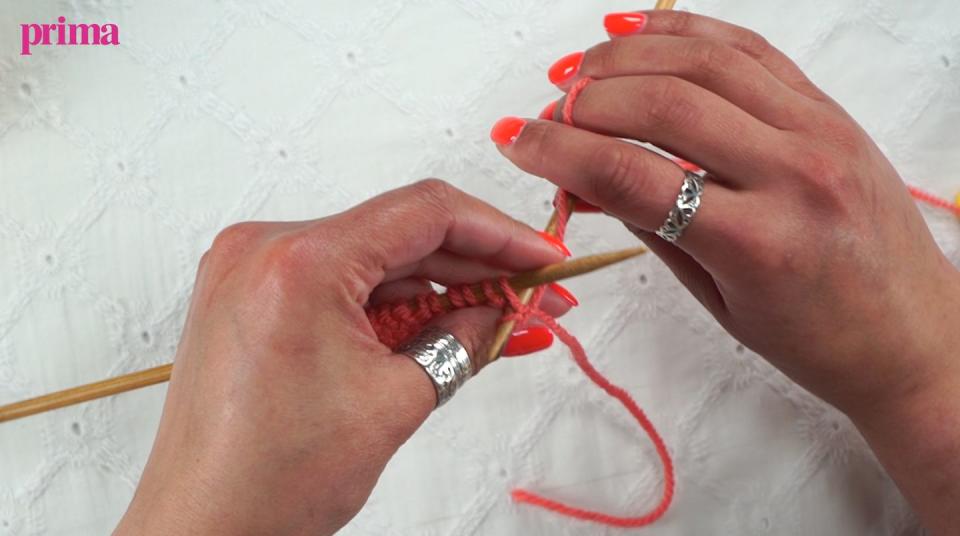
That’s it! All you need to do to keep going is repeat rows 1 and 2. You’ll soon spot if you’ve gone astray along the way as a clear ridge will begin to appear on your smooth side.
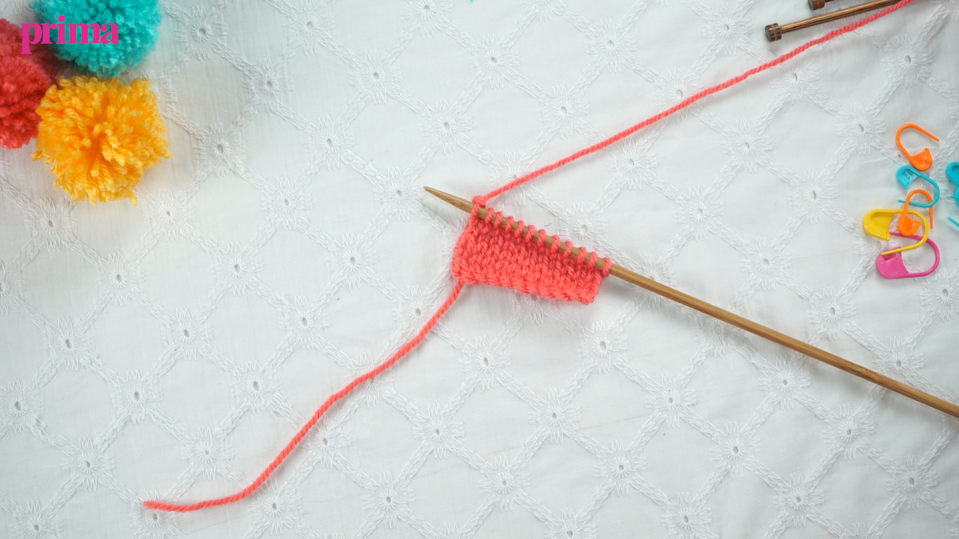
Reading your ball band and beyond
Every single ball of yarn you buy will come with a handy guide for how to use it – this can be found on its label or ball band. As well as telling you how to wash and care for your finished items, and what needle size you should consider using, it will also tell you how many stitches and rows should create about a 10cm square.
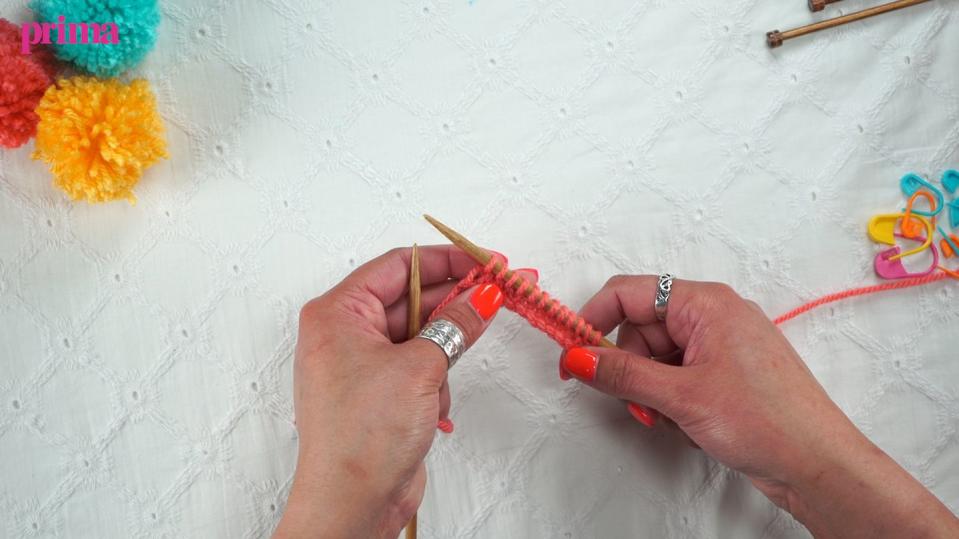
This guide to creating a 10cm square is a gauge to check your tension – how tightly or loosely you’re knitting. If you do have a go with the recommended number of stitches to check your tension, and it comes out too small, chances are you’re a tight knitter – so you should try going up at least one needle size. Too loose and your square will be larger than 10cm, so you might want to try going down a needle size.
But most importantly, these guides are all provided on the understanding that you’re using stocking stitch for this test. Knitting patterns will be more specific though so always be sure to read them before you start.
Now you know how to knit stocking stitch, want to try a new project? How about our Womble knitting pattern?
Do you love knitting? Share your creations with us by tagging @primamag in your pictures on Instagram!
You Might Also Like


